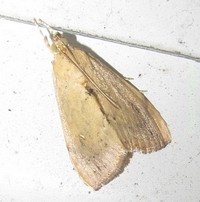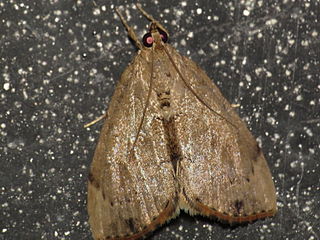Related Research Articles

The Pale of Settlement was a western region of the Russian Empire with varying borders that existed from 1791 to 1917 in which permanent residency by Jews was allowed and beyond which Jewish residency, permanent or temporary, was mostly forbidden. Most Jews were still excluded from residency in a number of cities within the Pale as well. A few Jews were allowed to live outside the area, including those with university education, the ennobled, members of the most affluent of the merchant guilds and particular artisans, some military personnel and some services associated with them, including their families, and sometimes their servants. The archaic English term pale is derived from the Latin word palus, a stake, extended to mean the area enclosed by a fence or boundary.

India pale ale (IPA) is a hoppy beer style within the broader category of pale ale.

Pale Blue Dot is a photograph of planet Earth taken on February 14, 1990, by the Voyager 1 space probe from a record distance of about 6 billion kilometers, as part of that day's Family Portrait series of images of the Solar System.
Pallor mortis, the first stage of death, is an after-death paleness that occurs in those with light/white skin. An opto-electronical colour measurement device is used to measure pallor mortis on bodies.
The Family Portrait, or sometimes Portrait of the Planets, is an image of the Solar System acquired by Voyager 1 on February 14, 1990 from a distance of approximately 6 billion kilometers from Earth. It features individual frames of six planets and a partial background indicating their relative positions. The picture is a mosaic of 60 frames. The frames used to compose the image were the last photographs taken by either Voyager spacecraft. The frames were also the source of the famous Pale Blue Dot image of the Earth. Astronomer Carl Sagan, who was part of the Voyager imaging team, campaigned for many years to have the pictures taken.
Pink colors are usually light or desaturated shades of reds, roses, and magentas which are created on computer and television screens using the RGB color model and in printing with the CMYK color model. As such, it is an arbitrary classification of color.

Idia is a genus of litter moths of the family Erebidae first described by Jacob Hübner in 1813.

Crocidolomia is a genus of moths of the family Crambidae.

Pantographa limata, the basswood leafroller moth, is a moth of the family Crambidae. It is found in North America, including Arkansas, Florida, Georgia, Illinois, Massachusetts, New Hampshire, New York, North Carolina, Ohio, Pennsylvania, Tennessee, Virginia, West Virginia, Wisconsin and Quebec.
Hypsopygia suffusalis is a species of snout moth in the genus Hypsopygia. It was described by Francis Walker in 1866 and is known from India.

Crocidolomia suffusalis, the croci, is a moth in the family Crambidae. It was described by George Hampson in 1891. It is found in south-east Asia, where it has been recorded from India, Sri Lanka, China, Thailand, Malaysia, Java, Bali, Borneo, the Philippines and Taiwan. It is also present in New Guinea and Australia, where it has been recorded from Queensland and New South Wales.
Musotima suffusalis is a moth in the family Crambidae. It was described by George Hampson in 1893. It is found in southern India and Sri Lanka.
Hemiscopis suffusalis is a moth in the family Crambidae. It was described by Francis Walker in 1866. It is found in Sri Lanka, Taiwan, Indonesia, Australia and the Philippines.
Mecyna suffusalis is a moth in the family Crambidae. It was described by Warren in 1892. It is found in Japan.
Pantographa acoetesalis is a moth in the family Crambidae. It was described by Francis Walker in 1859. It is found in Colombia, Ecuador, Panama, Belize and Costa Rica.
Pantographa idmonalis is a moth in the family Crambidae. It was described by Herbert Druce in 1895. It is found in Morelos, Mexico.
Pantographa prorogata is a moth in the family Crambidae. It was described by George Hampson in 1912. It is found in Suriname.
Pantographa scripturalis, the Andean leaf-roller, is a moth in the family Crambidae. It was described by Achille Guenée in 1854. It is found from Colombia to Bolivia. The habitat consists of cloud forests, where it has been recorded from altitudes between 800 and 1,800 meters.
Pantographa serratilinealis is a moth in the family Crambidae. It was described by Julius Lederer in 1863. It is found in Venezuela and Peru.
Agroterini is a tribe of the species-rich subfamily Spilomelinae in the pyraloid moth family Crambidae. The tribe was erected by Alexandre Noël Charles Acloque in 1897.
References
- ↑ Nuss, M.; et al. (2003–2014). "GlobIZ search". Global Information System on Pyraloidea. Retrieved July 15, 2014.
- ↑ "Taxonomy Browser: Pantographa suffusalis". Barcode of Life Data System (BOLD). Retrieved January 4, 2020.
- ↑ Biologia Centrali-Americana
 This article incorporates text from this source, which is in the public domain .
This article incorporates text from this source, which is in the public domain .